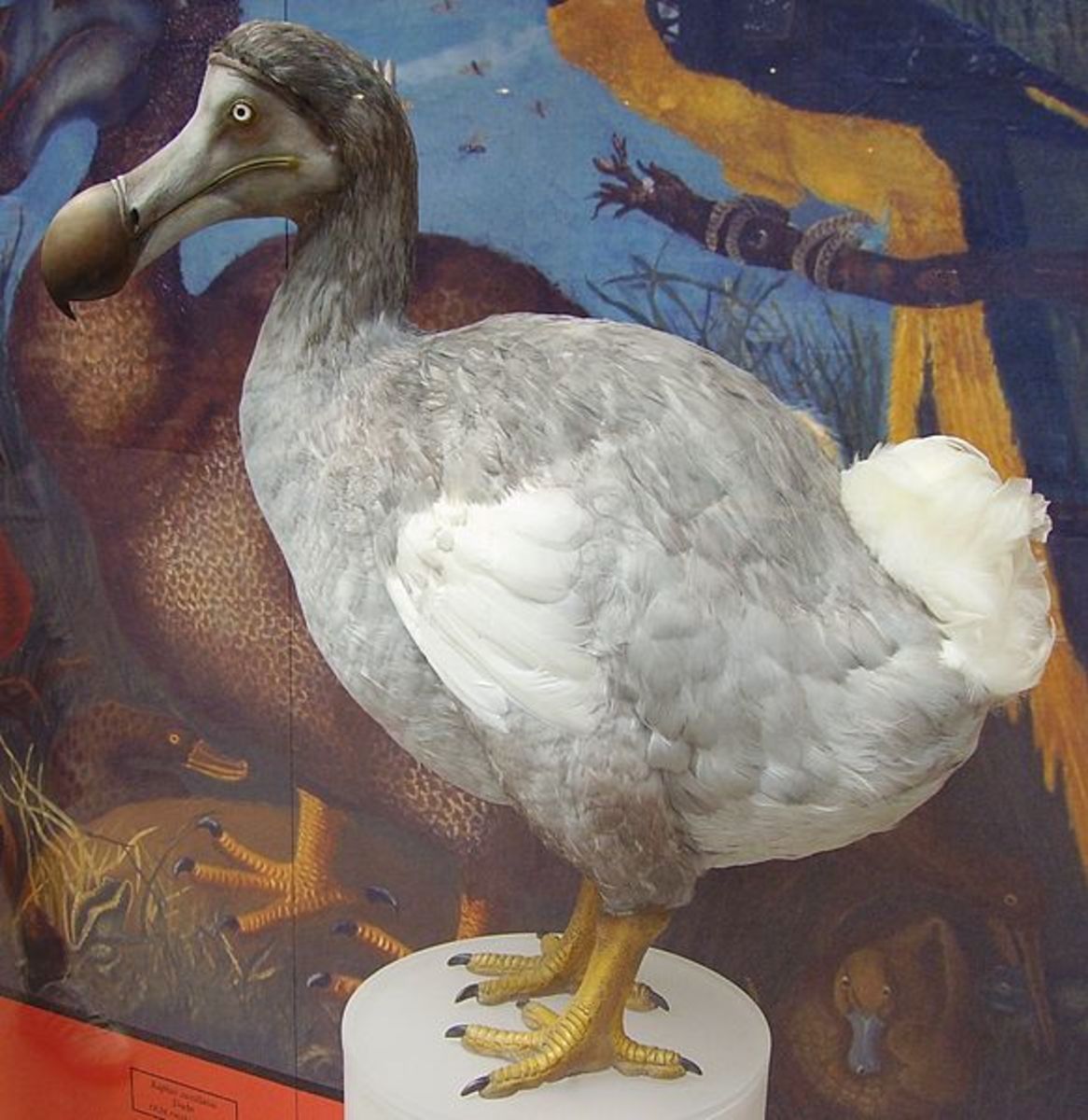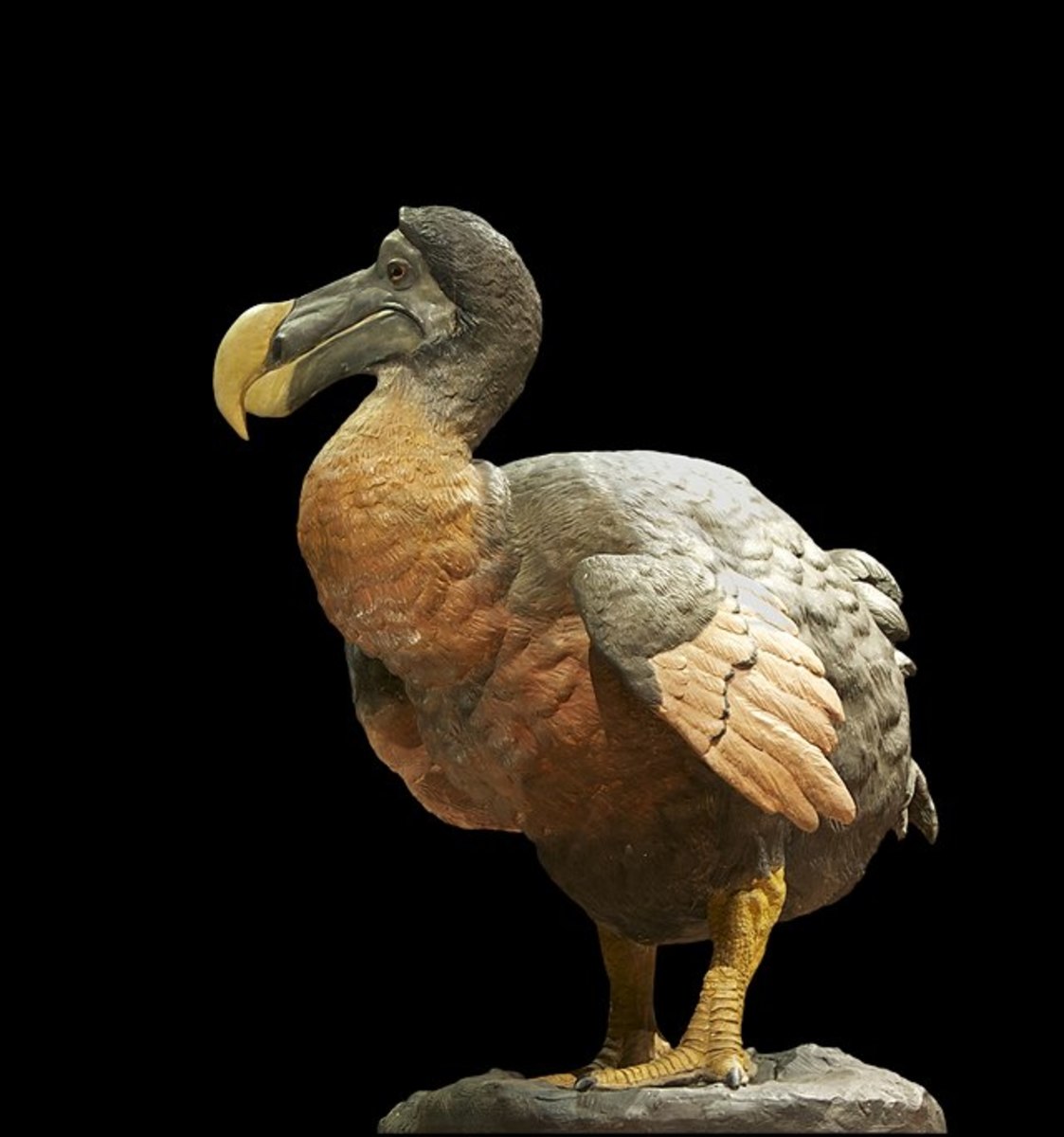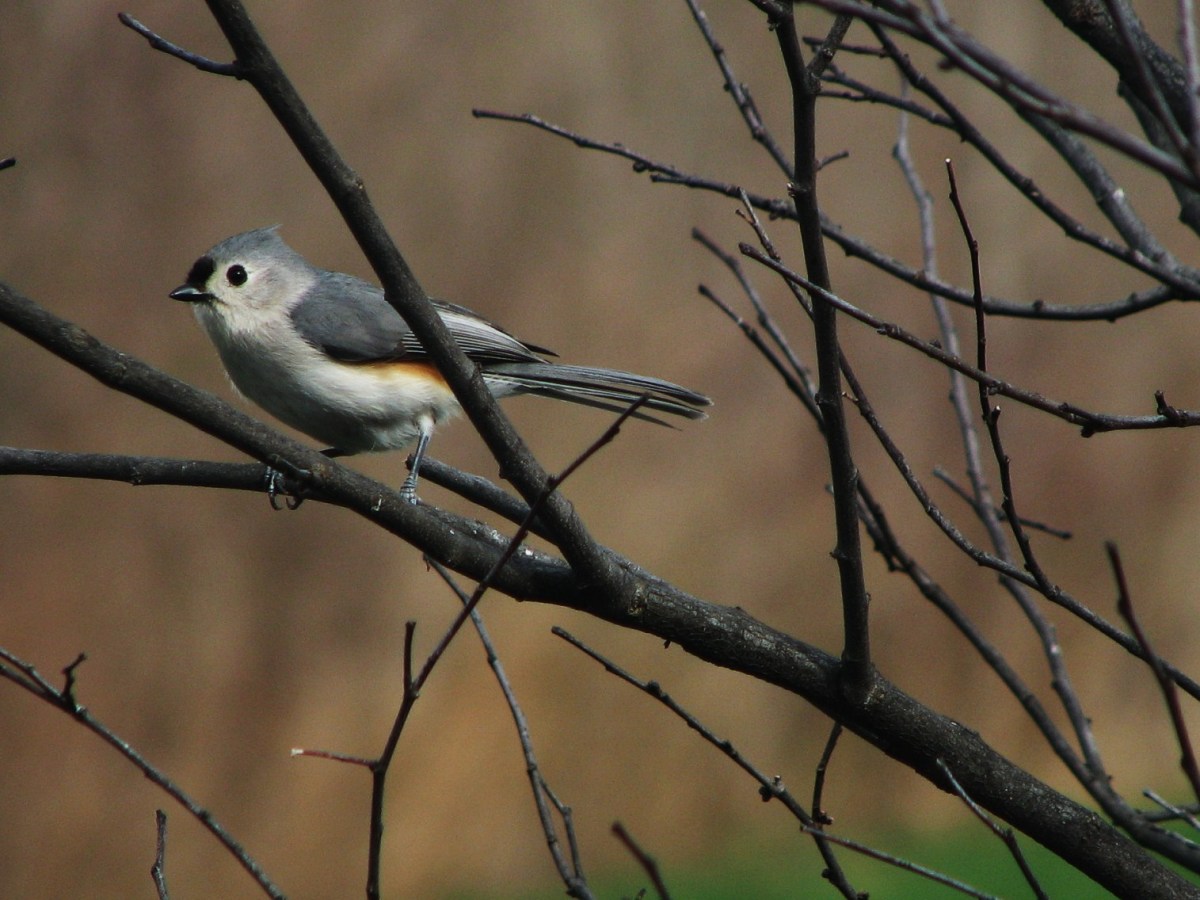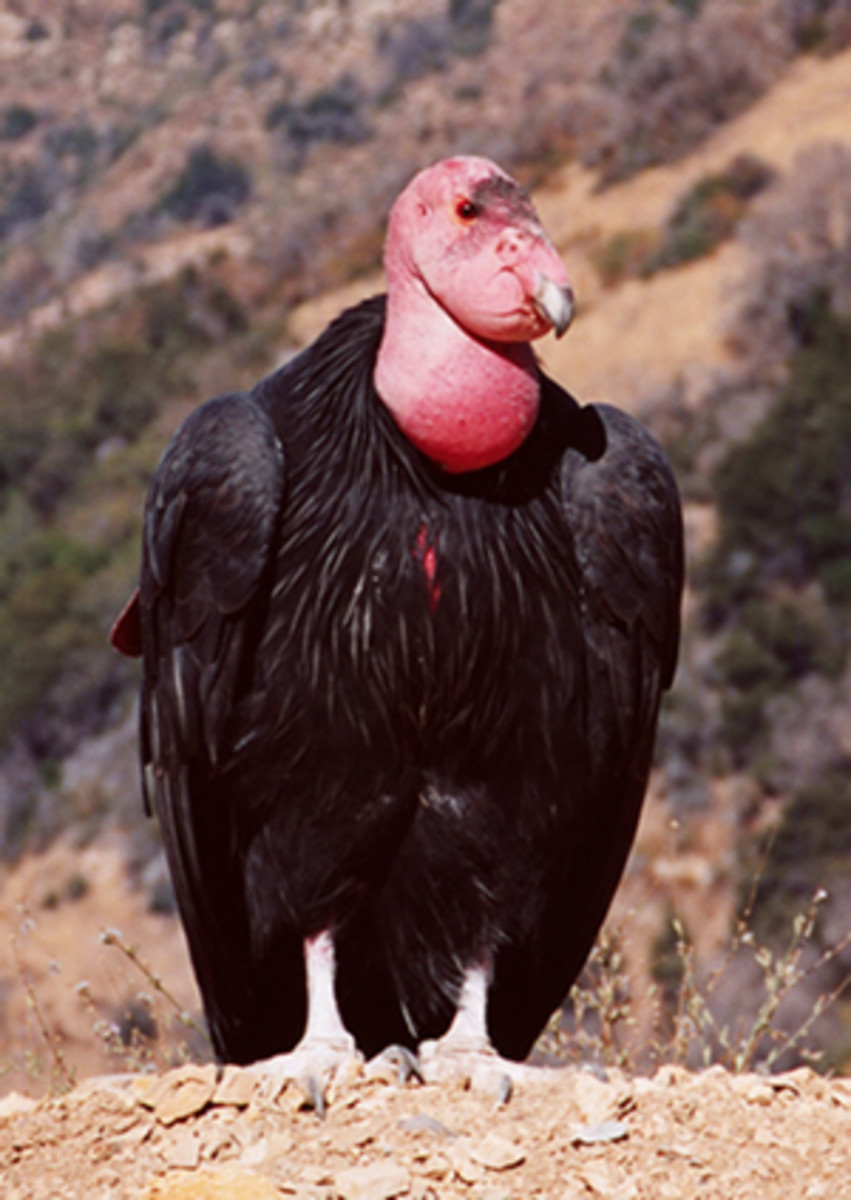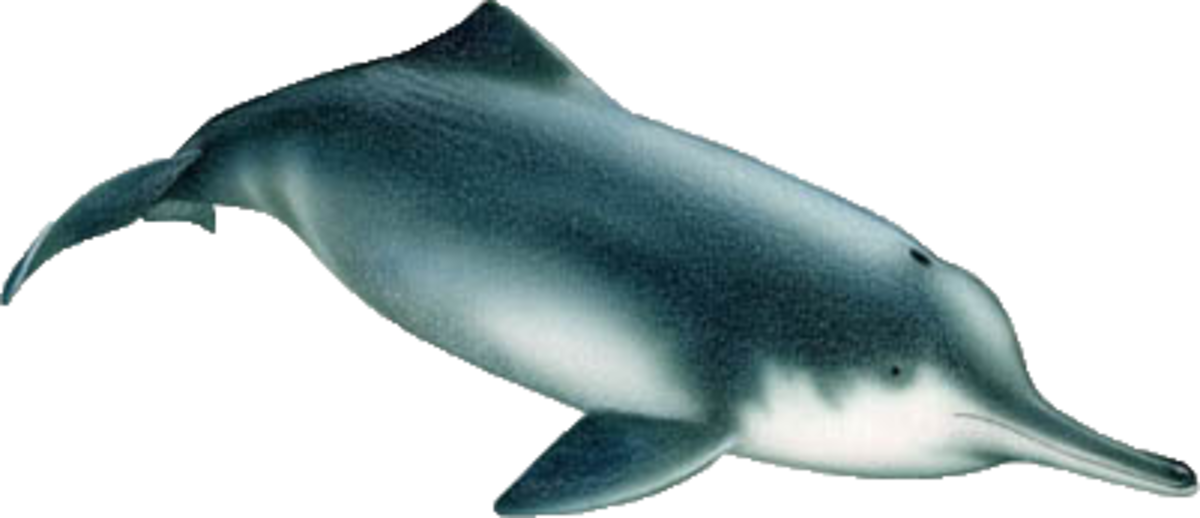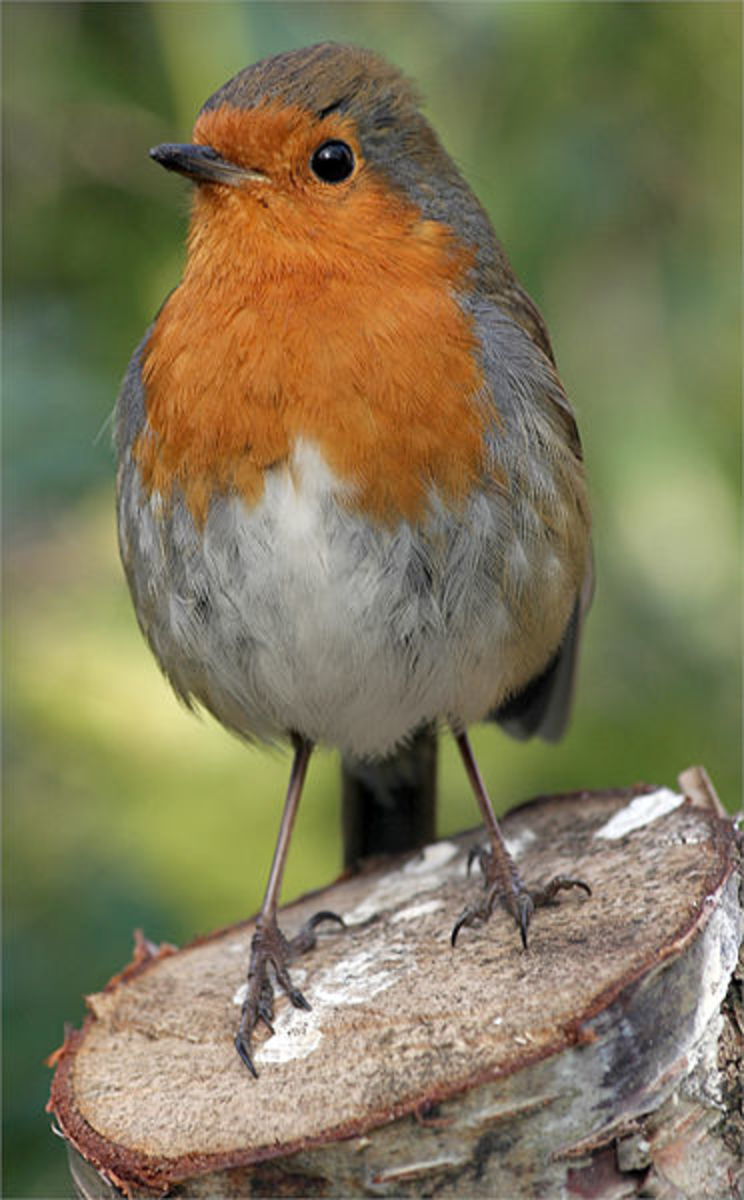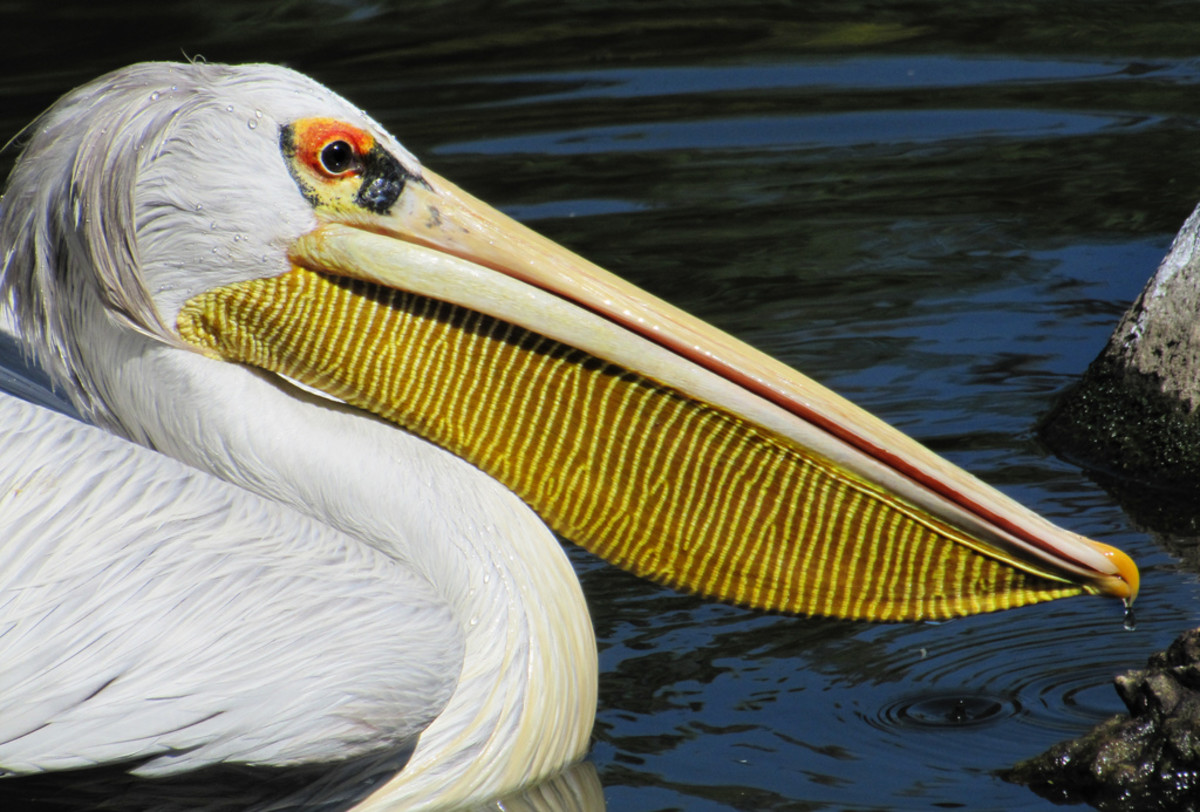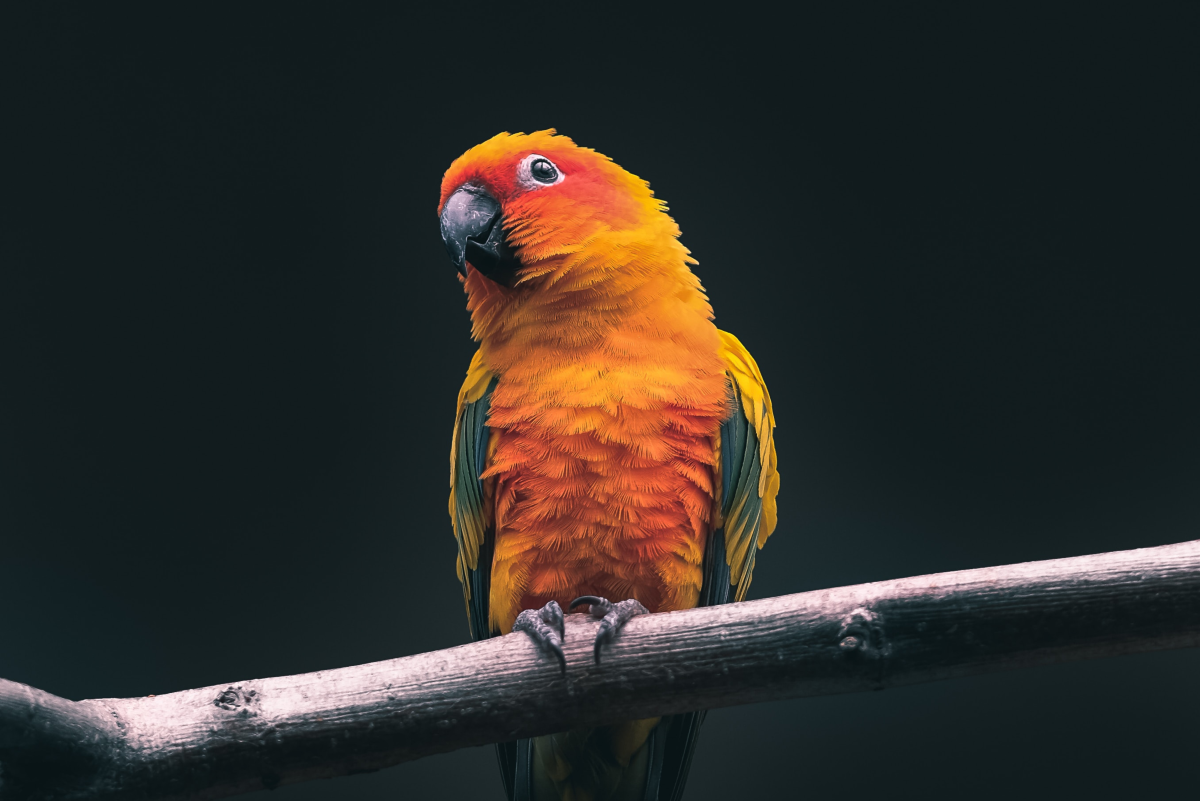Extinct Birds - The Dodo
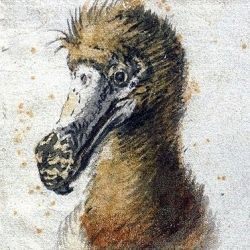
The Most Famous Extinct Bird of All
Many birds have become extinct over the past few centuries, mainly due to over-exploitation, destruction of habitat, the introduction of other animals that out-compete or prey on them, or a combination of all three.
The most famous of these is the Dodo, (Latin name Raphus cucullatus), so famous that it became proverbial - "Dead as a Dodo". This large flightless bird of the pigeon family inhabited the island of Mauritius, an island in the Indian Ocean, about two thousand miles from the coast of Africa.
The painting shown above may be one of the last illustrations made of a live Dodo (1638). It is housed at Boijmans Museum in Rotterdam. The painter, Cornelius Saftleven, was one of a family of painters. He excelled at painting animals, and his works show the influence of Roelant Savery, another artist who painted the Dodo. Savery was very important in establishing our image of the bird to this day, as explained later in this article.

The Land of the Dodos
These ex-pigeons lived an idyllic existence, isolated on the island of Mauritius. So idyllic in fact that they gave up flight in return for putting on weight and dining on the plentiful foodstuffs. In the painting below, painted by Roelant Savery, one can be seen on the right, bending to drink. Savery, who is sometimes known as Roelandt Savery, took a few artistic liberties, such as adding ruins in the background, and having the Dodo in coexistence with ostriches and other birds.
Savery was a Dutch painter who specialised in landscapes, but often featuring carefully painted wildlife. The Dodo seems to have fascinated him, as it was a subject he returned to again and again. In fact, he is known for being the most prolific painter of this bird, and his images of it were enormously influential on other painters and also on later naturalists.
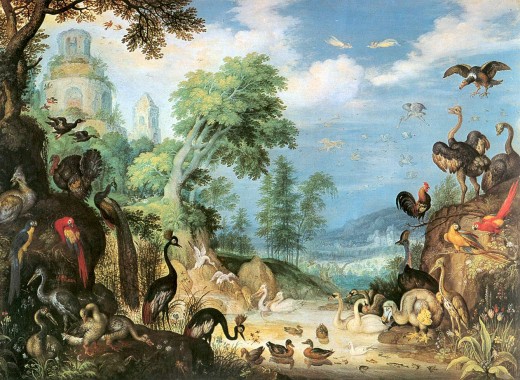
Discovery of the Dodo
The grand isolation of the Dodos was shattered in 1598 when Vice-Admiral Wybrandt Warwijck, sailing as part of a fleet led by Admiral Jacob Cornelis van Neck, disovered Mauritius. Warwijck organised an exploration, and this first description of the Dodo dates from then:
We also found large birds, with wings as large as of a pigeon, so that they could not fly and were named penguins* by the Portuguese. These particular birds have a stomach so large that it could provide two men with a tasty meal and was actually the most delicious part of the bird
* Scholars think this was a misnamer for pinion, referring to the Dodo's small wings.
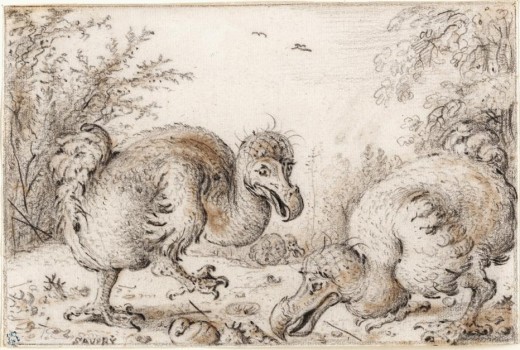
The Dutch sailors were looking for fresh meat to enliven their diet of weevil infested ship's biscuit, and the Dodos were so tame they stood bemused as the sailors pounced on them, and even came running to help when one of them was grabbed.
A Ship of the Type that Visited Mauritius
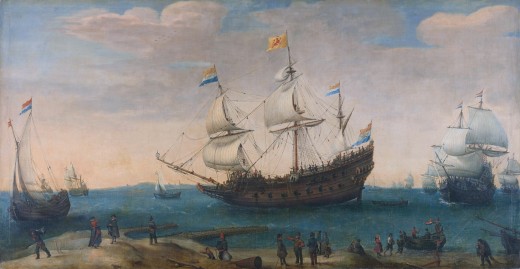
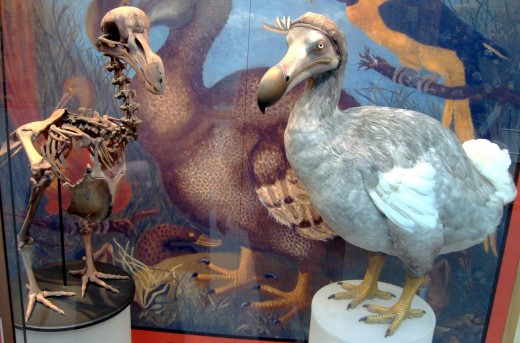
Rapid Extinction
More ships came and the European sailors continued to kill the Dodos to supplement their diet. Yet the real threat was from the other animals that the sailors introduced. Rats competed with the birds for food, but the most serious menace was probably the pigs which overran the island, since pigs are a serious predator of ground nesting birds and their chicks.

Beset on all sides, the Dodos didn't stand a chance. After a mere sixty years, their numbers crashed and they finally became extinct in 1662.
Now not even stuffed ones remain in museums - just a few fragmentary remains like those shown below, some fossils recovered in more recent years, and a few artists' reconstructions, like the ones depicted above.
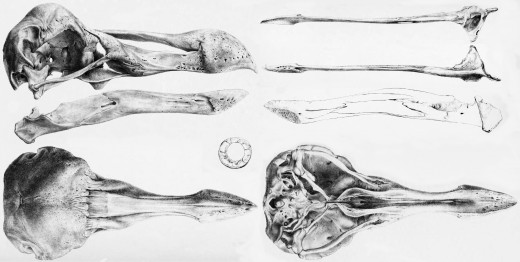
The Naturalistic Dodo
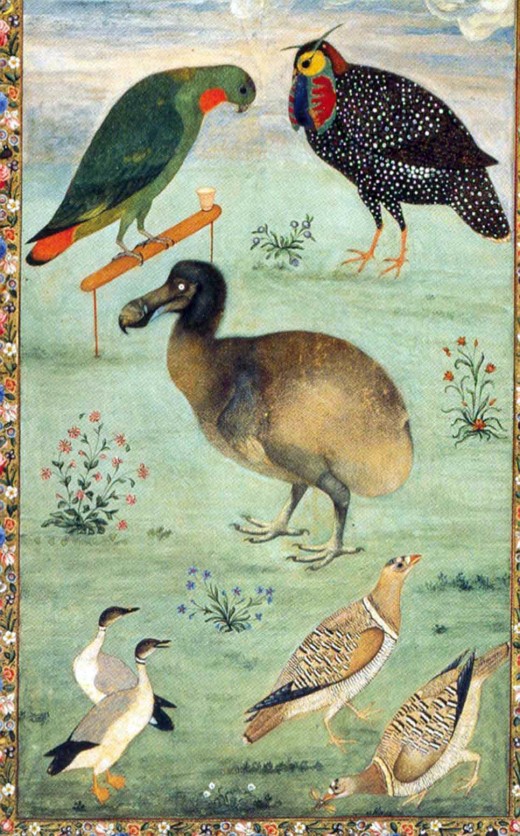
The Dodo in Art
During the period since their first discovery, only a handful of Dodos had survived the perilous sea voyage to Europe or been sketched or painted, not always with accuracy. Some drawings or paintings show the birds as grossly fat and oddly proportioned, but this could have been the result when badly preserved dead ones were painted.
Ustad Mansur's painting, made around 1625 and shown here, may be one of the most accurate depictions of a live Dodo. Two live birds were brought to India in the 1600s according to the explorer Peter Mundy who saw them in the menagerie of the Mogul emperor Jahangir in Sura, and this painting probably shows one of those. Historians believe that the Dodo's appearance must be pretty accurate as all the other birds in the picture are painted correctly.
Contrast this to the portlier version in the painting below, by Roelant Savery in 1626.
The Uncle's Flight of Fancy
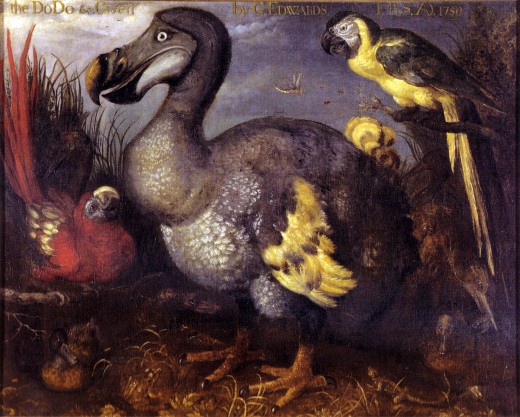
And the Nephew's Overblown Broiler
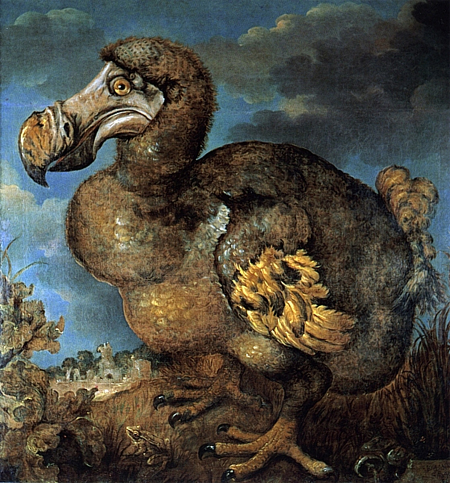
The Dodo According to the Savery Painters
As usual, Savery threw in a few parrots for a bit of colour, and this time the Dodo has yellow plumage. (He also painted it white in his fanciful 'Landscape with Orpheus and the animals', leading to a sub-genre of paintings with white Dodos, and a lot of confusion among 19th century naturalists, although there is no evidence for Dodos being white. In fact, it led to a persistent idea that the bird was also found on the island of Reunion, but this appears to have been a confusion stemming from old stories of a white bird that flew with difficulty, now thought to have been a species of white ibis, and also sadly extinct.) The idea of the Dodo is becoming fanciful as the real bird recedes into lost time; you can hardly imagine how such an odd looking creature could have thrived, even on an island without natural enemies.
Roelant's image was subsequently copied by many artists over the centuries, becoming more and more bloated and odd looking. Here's a painting by his nephew Hans, also known as Jan Savery. In this later picture, the Dodo looks really down in the beak, which it was entitled to be in the circumstances. This painting played an important role in the next stage of the Dodo's life, or rather afterlife.
Some Thoughts on the Real Dodo from Manchester Museum, England
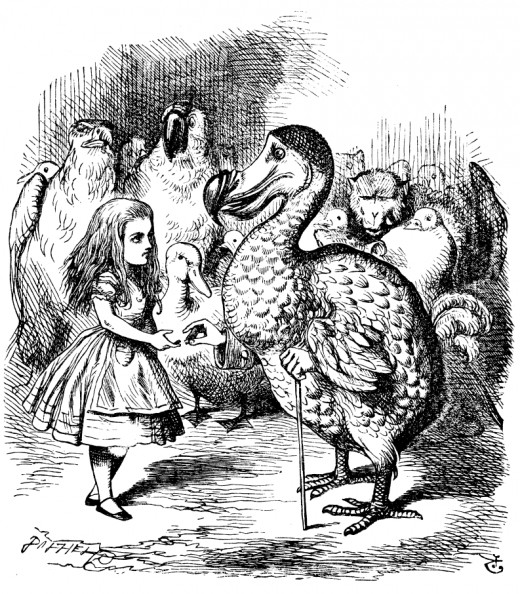
The Dodo - A New Life in Fiction
Despite its sad demise in reality, the Dodo is so memorable with its strange and comical appearance that it has found a phantom existence in fiction. It was first popularised in Lewis Carroll's 'Alice's Adventures in Wonderland', and the story goes that Lewis included the Dodo in his story after seeing Jan Savery's painting of it, at Oxford. No wonder such an odd looking bird has been immortalised in Tenniel's illustrations, given that they were based on the bloated, unhappy looking creature in Savery's depiction.
If You Could be a Character, Who Would You Be?
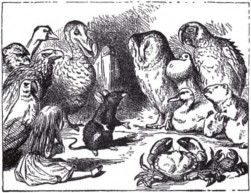
If you could be a fictional character, who would you like to be?
Thursday Next
Recently, the Thursday Next comic fantasy novels of British writer, Jasper Fforde, feature a pet Dodo called Pickwick, recreated from Dodo DNA. As Thursday's world is an alternative history to ours, genetic engineering is far more advanced. It probably isn't feasible in our universe, but it's a nice idea.
The books are imaginative and a fun read: for example, England is a republic and literature is so important that Thursday is a literary detective. The barrier between fiction and reality breaks down in these books, allowing characters to move from the printed page into the real world.
The one shown here is a paperback edition, but you can also get them for the Kindle or in hardback. To date, the series has expanded to seven books.
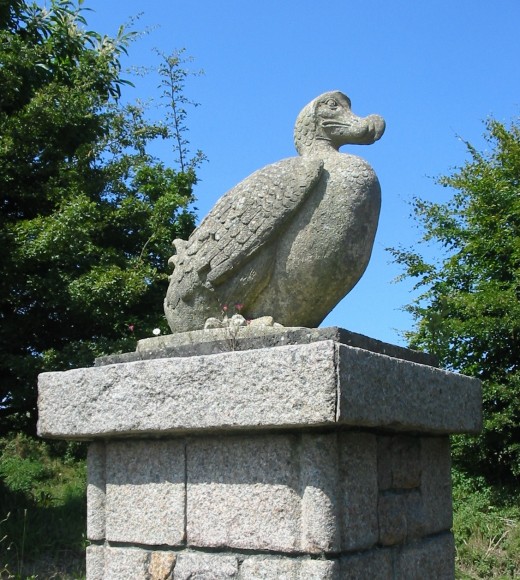
The Dodo Today?
The image of the Dodo lingers on, and has become everything from a character on the Mauritius coat of arms to a symbol used to promote preservation of endangered species. Even Doctor Who had a companion called Dodo in the 1960s. And it continues to inspire artists as shown by this statue at the Jersey Zoo.
Probably more has been written about the Dodo than any other bird, and with slimmer evidence. Actual remains of birds are very scanty - just a few bones. More have since been excavated as fossilised remains.
Some More Follow-up Information
Here are some useful links if you want to dig deeper into the sad story of the Dodo. Alternatively, you can read more about the Dodo in the books shown in this article, or even cuddle up with a soft toy version.
- Wikipedia article on the Dodo
A good overview of the subject. - Useful article by Julian Hume on the History of the Dodo
Julian Hume's "The history of the Dodo Raphus cucullatus and the penguin of Mauritius" from Historical Biology

